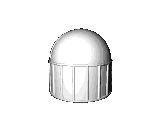











 |
"Relational design is obsessed with processes and systems to generate designs |
 |
 |
"(...)the introduction of the personal computer and growth of the World Wide Web presented an entirely new scenario whereby the user becomes part of a feedback loop and begins to influence the design, leading to much more iterative design practices."1 |
 |
 |
"(...)the imagined and often idealized audience becomes an actual user(s) — the so-called "market of one" promised by mass customization and print-on-demand; or perhaps the “end-user” becomes the designer themselves, through do-it-yourself projects, the creative hacking of existing designs(...)."2 |
 |

















































 |
"(...) the nature of design itself has broadened from giving form to discrete objects to the creation of systems and more open-ended frameworks for engagement: designs for making designs.(...)"3 |
 |
 |
"The second major influence on the emergence of relational design is the creation by designers of platforms or systems that empower users to generate their work,
effectively
|
 |
 |
"Relational design is obsessed with processes and systems to generate designs, which do not follow the same linear, cybernetic logic of yesteryear."5 |
 |





|
1,4 — Blauvelt, A. (2012); "The Rise of the Relational: Five Themes in Relational Design". In: The Journal of Design Strategies: Transdisciplinary Design; Vol. 5, No. 1; 42-48. Parsons. 2,3,5 — Blauvelt, A. (2008), "Towards Relational Design". In: Design Observer. Online: designobserver.com. |
|
All the GIFs used in this website, with the exception of the typographic animations, were borrowed from the project Cameron's World: A love letter to the Internet of old, "a web-collage of text and images excavated from the buried neighbourhoods of archived GeoCities pages (1994–2009)". |